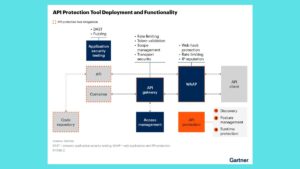Maximizing HR Tech Impact: A Roadmap to Success


In today’s rapidly evolving business landscape, human resources (HR) technology has become a cornerstone for managing talent, enhancing productivity, and driving organizational growth. From recruitment to employee engagement, HR tech solutions are transforming how companies operate. However, to truly maximize the impact of HR technology, organizations need a strategic approach. This blog provides a comprehensive roadmap to help businesses harness the full potential of HR tech and achieve sustainable success.
Understanding the Value of HR Tech
HR technology encompasses a broad range of tools and systems designed to streamline HR processes, improve data management, and enhance employee experiences. Key areas where HR tech delivers value include:
- Recruitment and Onboarding: Automating candidate sourcing, screening, and onboarding processes to improve efficiency and candidate experience.
- Performance Management: Utilizing performance tracking systems to set goals, provide feedback, and manage employee development.
- Employee Engagement: Implementing platforms that facilitate communication, recognition, and feedback to boost morale and retention.
- Learning and Development: Offering e-learning solutions and development programs to enhance employee skills and career growth.
- HR Analytics: Leveraging data analytics to gain insights into workforce trends, productivity, and organizational health.
Roadmap to Maximizing HR Tech Impact
1. Define Clear Objectives
Before implementing any HR technology, it’s crucial to define clear objectives. Understand what you aim to achieve with HR tech solutions. Are you looking to reduce recruitment time, improve employee engagement, or streamline payroll processes? Having specific goals will guide your technology selection and implementation strategy.
2. Conduct a Needs Assessment
Perform a thorough needs assessment to identify gaps and inefficiencies in your current HR processes. Engage with key stakeholders, including HR teams, managers, and employees, to gather insights and feedback. This will help you understand the pain points and determine the functionalities required from HR tech solutions.
3. Choose the Right Technology
Selecting the right HR technology is critical to achieving your objectives. Consider the following factors when choosing HR tech solutions:
- Scalability: Ensure the technology can grow with your organization.
- Integration: Look for solutions that can seamlessly integrate with your existing systems.
- User-Friendliness: Choose platforms that are easy to use and require minimal training.
- Customization: Opt for solutions that can be tailored to your specific needs and workflows.
4. Develop a Implementation Plan
A well-structured implementation plan is essential for the successful deployment of HR technology. Key steps in the implementation process include:
- Project Management: Assign a dedicated project manager to oversee the implementation process.
- Timeline: Establish a realistic timeline with clear milestones and deadlines.
- Training: Provide comprehensive training for HR staff and end-users to ensure smooth adoption.
- Testing: Conduct thorough testing to identify and resolve any issues before full deployment.
5. Foster a Culture of Adoption
For HR technology to be effective, it must be embraced by the entire organization. Foster a culture of adoption by:
- Communicating Benefits: Clearly communicate the benefits of the new technology to employees and managers.
- Involving Users: Involve end-users in the implementation process to gather feedback and ensure the technology meets their needs.
- Providing Support: Offer ongoing support and resources to help users navigate the new system.
6. Leverage Data and Analytics
One of the most significant advantages of HR technology is its ability to generate valuable data. Leverage HR analytics to gain insights into workforce trends, measure the effectiveness of HR initiatives, and make data-driven decisions. Regularly review and analyze data to identify areas for improvement and optimize HR strategies.
7. Continuously Improve and Innovate
HR technology is constantly evolving, and staying ahead of the curve requires continuous improvement and innovation. Regularly assess the effectiveness of your HR tech solutions and stay informed about the latest trends and advancements. Be open to adopting new technologies and approaches that can further enhance your HR processes and drive organizational success.
Conclusion
Maximizing the impact of HR technology requires a strategic and holistic approach. By defining clear objectives, conducting a thorough needs assessment, choosing the right technology, and fostering a culture of adoption, organizations can unlock the full potential of HR tech. Leveraging data and analytics and committing to continuous improvement will ensure that HR technology remains a powerful tool for driving productivity, engagement, and growth. With a well-planned roadmap, businesses can navigate the complexities of HR tech implementation and achieve sustainable success.







